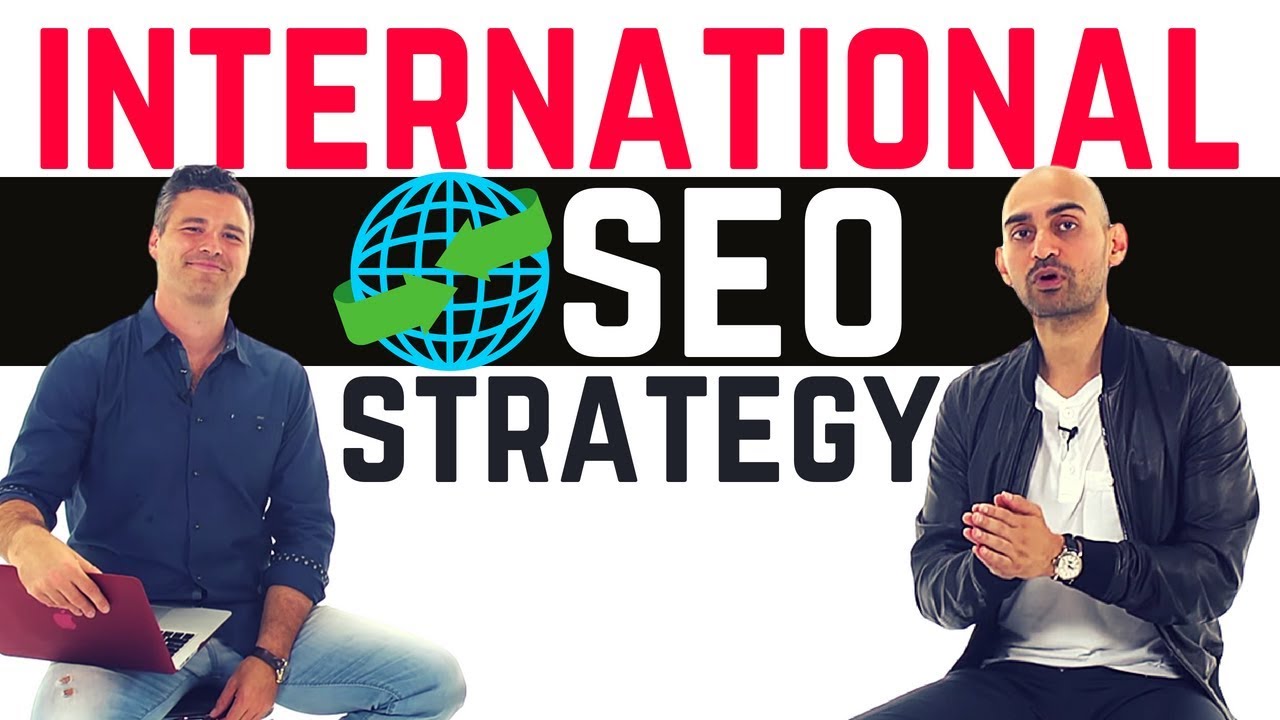International SEO Strategy (Get Started NOW)
Search Engine Optimization Tips
Learn how to get started with international SEO to expand your business globally. ►Subscribe: https://goo.gl/ScRTwc to learn more secret SEO tips.
Find me on Facebook: https://www.facebook.com/neilkpatel/
Read more on my blog: https://neilpatel.com/blog
Neil Patel here for another Q & A Thursday. I’m here with Adam LoDolche from https://viewership.com/.
1:00 This one is from Jason AK Mitchell, and the question is “How do you get started in international SEO? “I want to start getting my content in the hands “of Germany, India, China, Brazil, Japan, “and other Spanish-speaking countries. “Of course I want global expansion “but what are the practices or resources to get started?”
2:30 I’ve done a lot of international SEO, and I’ve made a lot of mistakes. The first thing you need to keep in mind is yes, and there are people all around the world. The market’s much bigger than the English market or the United States, the United Kingdom. I love the U.S., like all the countries, but in general, when you think about global expansion, you have to understand where your clients are coming from really.
3:00 Take your time. Go after the regions that you know there’s going to be money, and there’s going to be customers. And the reason I say this isn’t to talk poorly on any of the countries out there, right. I spent well into the million-plus dollar mark in global expansion. We have a huge team in Brazil. We have a team in Germany. We have a team for all the Spanish-speaking countries, right. From Spain to Mexico, to Uruguay, to Peru, wherever it may be, right that speaks Spanish.
A lot of people forget that you have to translate your content manually. If you take a tool like Google translate, and someone comes to your website, and you translate it into German and Mandarin and all these languages, what do you think’s going to happen with the auto-translation?
Bounce.
Exactly. Because it’s not that great.
4:30 You want to make sure that when you’re leveraging translations, use hreflang to tell Google what that content is relevant for. And you’ll want to upload it on your site using subdomains. I know on neilpatel.com I use subdirectories. You’re better off, and it’s easier to get rank, cause if you use subdomains, such as DE.neilpatel.com, I, on the other hand, use neilpatel.com/DE. I would have done better if I’d did DE.neilpatel.com from all the tests we ran. And then you have to start building press within that region.
5:00 You have to start building backlinks. You have to get social shares. So you could end up boosting posts on Facebook to the audience. But it’s not easy. As you can see, all these things cost money. So unless you know that these regions can produce income for you, because you’re already starting to get customers from these regions, and the majority do their Google searches in languages that aren’t in English, you can consider expanding. But keep in mind, it’s a very expensive endeavor.
Would you recommend maybe testing the waters with pay per click in those regions to see if it’s even worth their while? Before going into it?
5:30 That’s a smart idea. If you’re unsure, test out pay per click. You can even do targeting on Facebook and do ads within that region. If you don’t know how to run Google AdWords ads, and by testing that out, you can quickly see if you’re going to be able to collect leads and sales from that. But when you’re testing the pay per click campaigns or Facebook ads, you want to make sure you translate your landing page.
6:00 In general, a lot of people who are looking to expand internationally, they haven’t even dominated or done that well within the region they’re in. So, before you expand internationally, try to dominate the region you’re already in and then expand from there.
6:30 That’s it for this week’s Q & A Thursday video. If you have a question, leave a comment below. I’ll answer it. Or if you want your question on next week’s Q & A Thursday video, leave a comment below. I’ll still answer it. And it may show up on next week’s video.
Learn how to get started with international SEO to expand your business globally. ►Subscribe: https://goo.gl/ScRTwc to learn more secret SEO tips.
Find me on Facebook: https://www.facebook.com/neilkpatel/
Read more on my blog: https://neilpatel.com/blog
Neil Patel here for another Q & A Thursday. I’m here with Adam LoDolche from https://viewership.com/.
1:00 This one is from Jason AK Mitchell, and the question is “How do you get started in international SEO? “I want to start getting my content in the hands “of Germany, India, China, Brazil, Japan, “and other Spanish-speaking countries. “Of course I want global expansion “but what are the practices or resources to get started?”
2:30 I’ve done a lot of international SEO, and I’ve made a lot of mistakes. The first thing you need to keep in mind is yes, and there are people all around the world. The market’s much bigger than the English market or the United States, the United Kingdom. I love the U.S., like all the countries, but in general, when you think about global expansion, you have to understand where your clients are coming from really.
3:00 Take your time. Go after the regions that you know there’s going to be money, and there’s going to be customers. And the reason I say this isn’t to talk poorly on any of the countries out there, right. I spent well into the million-plus dollar mark in global expansion. We have a huge team in Brazil. We have a team in Germany. We have a team for all the Spanish-speaking countries, right. From Spain to Mexico, to Uruguay, to Peru, wherever it may be, right that speaks Spanish.
A lot of people forget that you have to translate your content manually. If you take a tool like Google translate, and someone comes to your website, and you translate it into German and Mandarin and all these languages, what do you think’s going to happen with the auto-translation?
Bounce.
Exactly. Because it’s not that great.
4:30 You want to make sure that when you’re leveraging translations, use hreflang to tell Google what that content is relevant for. And you’ll want to upload it on your site using subdomains. I know on neilpatel.com I use subdirectories. You’re better off, and it’s easier to get rank, cause if you use subdomains, such as DE.neilpatel.com, I, on the other hand, use neilpatel.com/DE. I would have done better if I’d did DE.neilpatel.com from all the tests we ran. And then you have to start building press within that region.
5:00 You have to start building backlinks. You have to get social shares. So you could end up boosting posts on Facebook to the audience. But it’s not easy. As you can see, all these things cost money. So unless you know that these regions can produce income for you, because you’re already starting to get customers from these regions, and the majority do their Google searches in languages that aren’t in English, you can consider expanding. But keep in mind, it’s a very expensive endeavor.
Would you recommend maybe testing the waters with pay per click in those regions to see if it’s even worth their while? Before going into it?
5:30 That’s a smart idea. If you’re unsure, test out pay per click. You can even do targeting on Facebook and do ads within that region. If you don’t know how to run Google AdWords ads, and by testing that out, you can quickly see if you’re going to be able to collect leads and sales from that. But when you’re testing the pay per click campaigns or Facebook ads, you want to make sure you translate your landing page.
6:00 In general, a lot of people who are looking to expand internationally, they haven’t even dominated or done that well within the region they’re in. So, before you expand internationally, try to dominate the region you’re already in and then expand from there.
6:30 That’s it for this week’s Q & A Thursday video. If you have a question, leave a comment below. I’ll answer it. Or if you want your question on next week’s Q & A Thursday video, leave a comment below. I’ll still answer it. And it may show up on next week’s video.
source

